Episodes & Scenarios
By Mento 3 Comments
At some point between when I decided to spend four (secretly five) days playing Squaresoft's 1996 Super Famicom JRPG Rudra no Hihou and when I last discussed Square Enix getting into episodic games in some recent Sunday Summaries blog, I jotted down an odd little epiphany in my ideas notepad to expand upon later, and subsequently forgot all about it. Well, until even more recently, when my memory was jogged with the international release of Tokyo RPG Factory's I Am Setsuna.
The epiphany is thus: Square Enix has definitely been on something of an episodic kick of late, with experiments in the format extending from the imminent reboot of Final Fantasy VII - which saw some early notoriety after the news went up that it would be delivered to us piecemeal - to their most recent take on IO Interactive's Hitman, a.k.a. Dan and Brad's Murderous Slapstick Variety Hour, to the DONTNOD-developed indie weepie Life is Strange. Meanwhile, some 20 years ago, Squaresoft went through a period of developing RPGs with an emphasis on a scenario-based format. Frequent Square director (and eccentric designer) Akitoshi Kawazu's largely to blame for this: of the many scenario-based Squaresoft games released in the 90s, which include Live A Live, Rudra no Hihou, Legend of Mana, and all three Romancing SaGas, both SaGa Frontiers and the first three Front Mission games, he was director of five of them and produced two others. Now also consider that Square Enix is looking to produce games that hearken back to an earlier era, specifically their "golden era" which saw a string of critically-acclaimed and bona fide blockbuster hits around the 90s period mentioned above, with the recent release of I Am Setsuna.
So here's my point: If Square Enix is dedicated, at least partially, to revisiting a period of time when they crafted a number of universally well-regarded RPGs and are also very much presently invested in an episodic model of game development and distribution, presumably because such a delivery method offers a means to fund subsequent episodes on the sales of the earlier ones (or, more likely, sales of the season pass), they've been sitting on a certain long-forgotten approach they once used that may work out very well for them given the present circumstances.
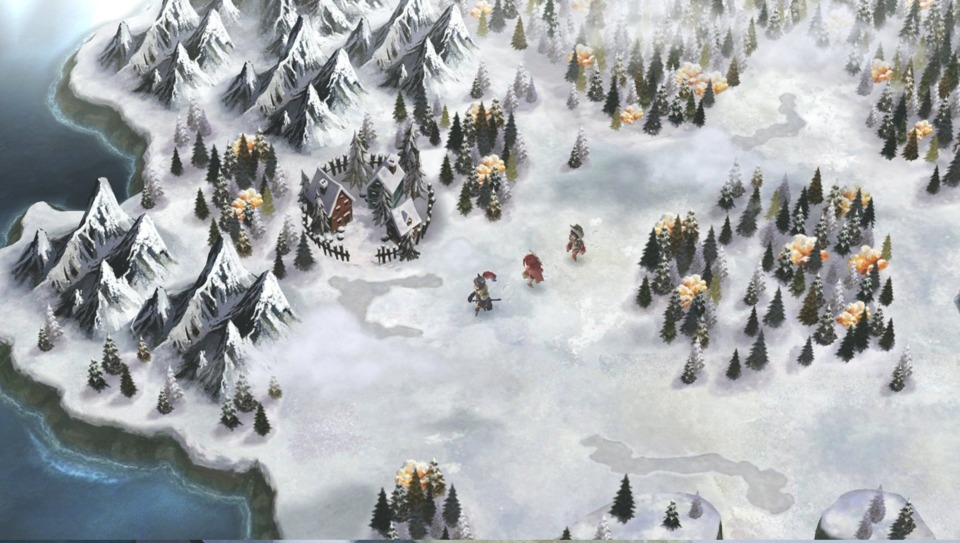
However, since they're only likely to try something this crazy once, I've taken the liberty of looking at some of the games listed above and have analyzed the suitability of turning their previously scenario-based models into not-entirely-disparate episodic-based ones. There are multiple ways to approach a scenario-based format, it turns out, and Squaresoft discovered a number of them in their heyday.
For the sake of... I dunno, video game science, I've defined a scenario-based RPG for the purposes of these rundowns as one where the player takes control of several independent main characters and for each one experiences a discrete story, side-quests and companion characters included, that may or may not have links to the stories of the other main characters, and that may or may not conclude in a "final scenario" that joins the several disparate groups together. Something like Chrono Trigger, in spite of its many distinct time-period-based "episodes", wouldn't count as a scenario-based game because its party is constant and the game features a single, contiguous storyline.
Romancing SaGa 2 - The "Generations" Scenario Format
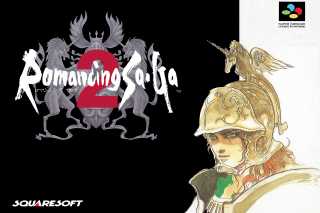
The second Romancing SaGa took what would become a favorite trope of some RPGs from this era and had its conflicts be generational in nature. That meant passing a kingdom from King to Prince, Queen to Princess, along with various heroic attributes and, more often than not, a persistent force of evil that could survive from one generation of hero to the next. A lot of games that borrow this format - Dragon Quest V, Fire Emblem: Seisen no Keifu, Phantasy Star III - would cap at one or two subsequent generations, while others - Dragon Valor, Agarest: Generations of War, Massive Chalice, Rogue Legacy - would continue for many hundreds of years with incrementally improved offspring.
What this particular scenario-based structure offers is a persistent kingdom that could change after each generational skip, either falling further into decay or rising further from its humble beginnings. While players might wait several months to play the next episode, the world itself will have undergone decades of changes brought about by the decisions of the player - these might include the regular Telltale-style decisions of "should I kill this guy or try to convince him to defect to our side?" or "do I fix this ancient dam before it breaks, or work on repairing the castle walls?", but also the generational consideration of who to marry. In the above games, the choice of one's husband/wife has an overt influence on the resulting progeny, who then grows up to become the next protagonist.
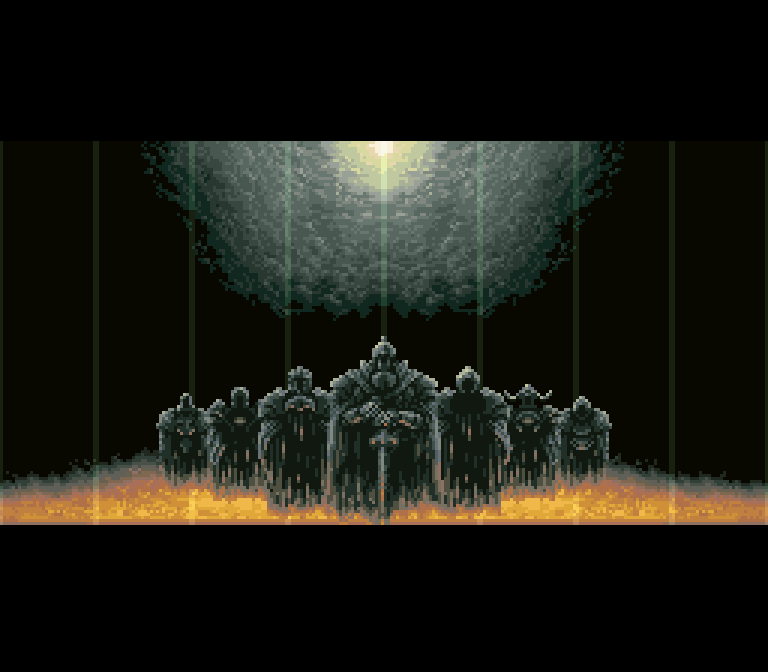
Suitability for an episodic game: High. Provided each episode is a moderately-sized RPG that gives you a decent sense of the world, as the effects of each multi-decade gap become all the more pronounced and that impact might be lost if the world is too limited from the start. Alternately, developing one's kingdom over generations might give players the opportunity to change what parts of the world are presently accessible, in which case gating off parts of the world depending on player-choice (until a later episode, at least) might make for a compelling series. Either way, the time skips will justify reusing the same environments if the environments of those locations mutate wildly over time.
Rudra no Hihou - The "Overlapping" Scenario Format
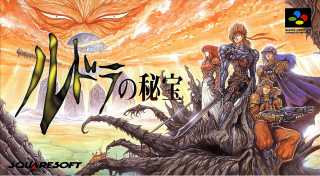
Perhaps the most common scenario-based format, these games tend to have different main characters operating at the same time in different parts of the world. This means that they can sometimes overlap one another, or influence and be influenced by the unseen actions of another group. By playing each of the scenarios, the player can fully appreciate the effect each group is having on the others, and how the overall plot is shaping up. In a sense, you're getting to watch a single story from multiple perspectives, giving you all the necessary context to understand what is truly going on, rather than the fractured and confusing half-truths and observed events you might see from the perspective of a single protagonist. Rudra no Hihou is the Squaresoft example, but you might also consider The 7th Saga, its sequel Mystic Ark or Suikoden III.
With this model, the game is able to establish a labyrinthine plot and have players piece it together from seeing it from the viewpoints of a series of protagonists. Some of these protagonists will be met in the stories of earlier heroes. For instance, a guest character in one episode might turn out to be the hero in another. Given enough time between episodes, the developers might even register which side characters from an early episode were proven to be popular to audiences and give them a more major role further in the series. Each episode can be designed to reveal more of what's really going on, but also gives players an opportunity to explore the same world and its dungeons as completely different characters, each of which will have their preferred strategy when it comes to combat and their own particular reactions to recurring NPCs and events. If sticking to the Rudra no Hihou blueprint closely, each episode of the game might occur at the same time and the player will have to figure out how to avert some apocalyptic event that happens soon after each episode concludes. The last episode would be the one to break this pattern, being set directly after all the previous and bringing the various groups together to face the final foe.
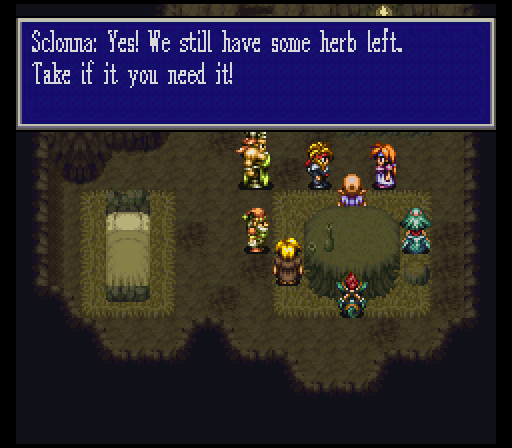
Suitability for an episodic game: Moderate. This runs into even greater problems with repetition than the previous model, but also has the most potential from a storytelling perspective. By limiting the action to one world at a certain point in time, the developers can write episodes with groups that are able to interact with each other, creating the sort of mystery plot where something unexpected might happen to one party that only becomes explained in a future episode with a different party who had more to do with what occurred, or were at least standing closer and got a better view. Gameplay-wise, you might have a dungeon like Skies of Arcadia's Daccat Island, where two parties progress through the same dungeon in different areas, each activating buttons that helps the other party to progress. Of course, you'd only see one half of this until a future episode becomes available...
Live A Live - The "Wild Card" Scenario Format
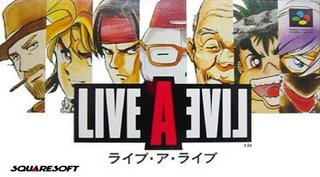
Live A Live is distinctive among scenario-based RPGs because each of its scenarios are far more dissimilar than simply containing a different party of characters. Each represent an entirely diverse setting - from a prehistoric adventure that predates the written word to a chapter about near-future psychic Japanese teenagers and mechs, from ninjas steathily exploring an enormous pagoda to the stir crazy travails on board an interplanetary vessel, to an elaborate Street Fighter parody or a classic "The Magnificent Seven" Western yarn. Live a Live ties each of its scenarios together with a few recurring elements - namely, its turn-based tactical combat and a final boss named some variant of "Odio". This Odio is revealed to be the timeless source of all evil, the Demon King, who has influenced each of the game's scenarios for the worse, forcing the heroes of each scenario to confront and defeat him. The game's penultimate scenario sets up how Odio came to be, and the final scenario sees the heroes from all the previous scenarios teaming up to destroy Odio once and for all. I'd give you more examples of this sort of format, but I'm coming up short. The first Heavy Metal movie?
WIth this format, Square Enix can let their hair down and experiment with five (or more) divergent RPG settings that they might be pondering for the next game to follow I Am Setsuna. These episodes could even be created by different developers, giving each a truly distinctive feel. As with Live A Live, they would need at least one or two connecting threads for a conclusive "final" episode to bring together and resolve, but the content and gameplay could be wildly different for each of the episodes.
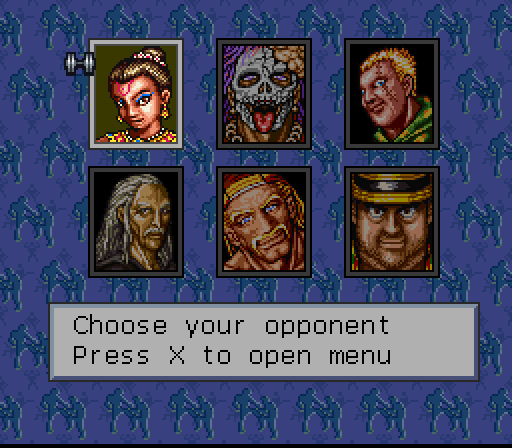
Suitability for an episodic game: Indeterminate. The risk here is in losing the player through the sheer differences between one episode and the next, potentially generating some animosity if one or more of the episodes fails to succeed as well as the others, or proves to be more unpopular. Switching from a dark fantasy setting like Dark Souls to something comparatively light and bouncy like Tokyo Mirage Sessions might prove too jarring for some as well, if they decide to go that route. While this model offers a lot of freedom, it probably requires some reining in to work effectively. Ideally, Square Enix could use this model to revisit five of their more popular "golden era" RPGs with "spiritual sequels" for same. Perhaps a mix that includes a turn-based RPG inspired by a classic Final Fantasy like IV or VI, a SRPG influenced by Final Fantasy Tactics, an action RPG based on Secret of Mana - or they could decide to stick with one specific gameplay model and instead mix up the thematic genres, as with Live A Live. They could then use the feedback for this experimental potpourri of ideas, manifested as smaller episodes than fully fleshed-out 30+ hour JRPGs, to figure out which concept(s) would be the best to develop further down the road in their throwback RPG initiative.
Anyway, that's just a handful of ways that Squaresoft's old scenario-based game ideas could be repurposed for Square Enix's present day episodic game focus. Something about the cautious approach of an episodic format is clearly appealing to the guys calling the shots at SE HQ, and if I Am Setsuna doesn't quite do the numbers they were hoping for but are still compelled to further explore that arena given the many requests for remakes/ports of their classic games and the surprise success of retro RPGs like Bravely Default, they might consider using something like any of the above to produce a game in their preferred "safer" episodic RPG format.
Plus, it's not like reworking the scenario-based format wouldn't be applicable to their mission of producing RPGs similar to the ones they made in their golden era, given that's where most of those scenario-based RPGs hailed from. Makes sense to me, at least.
